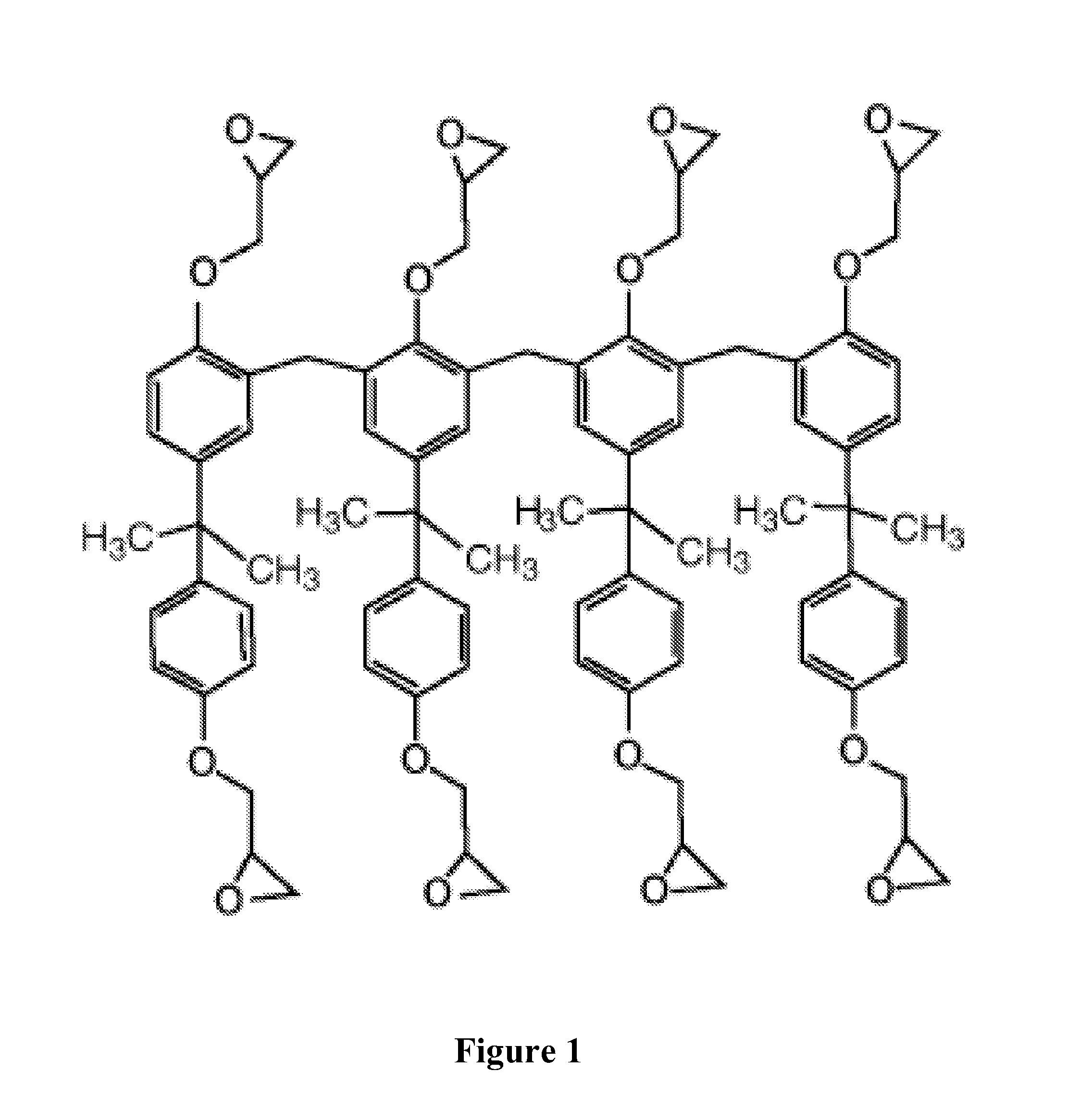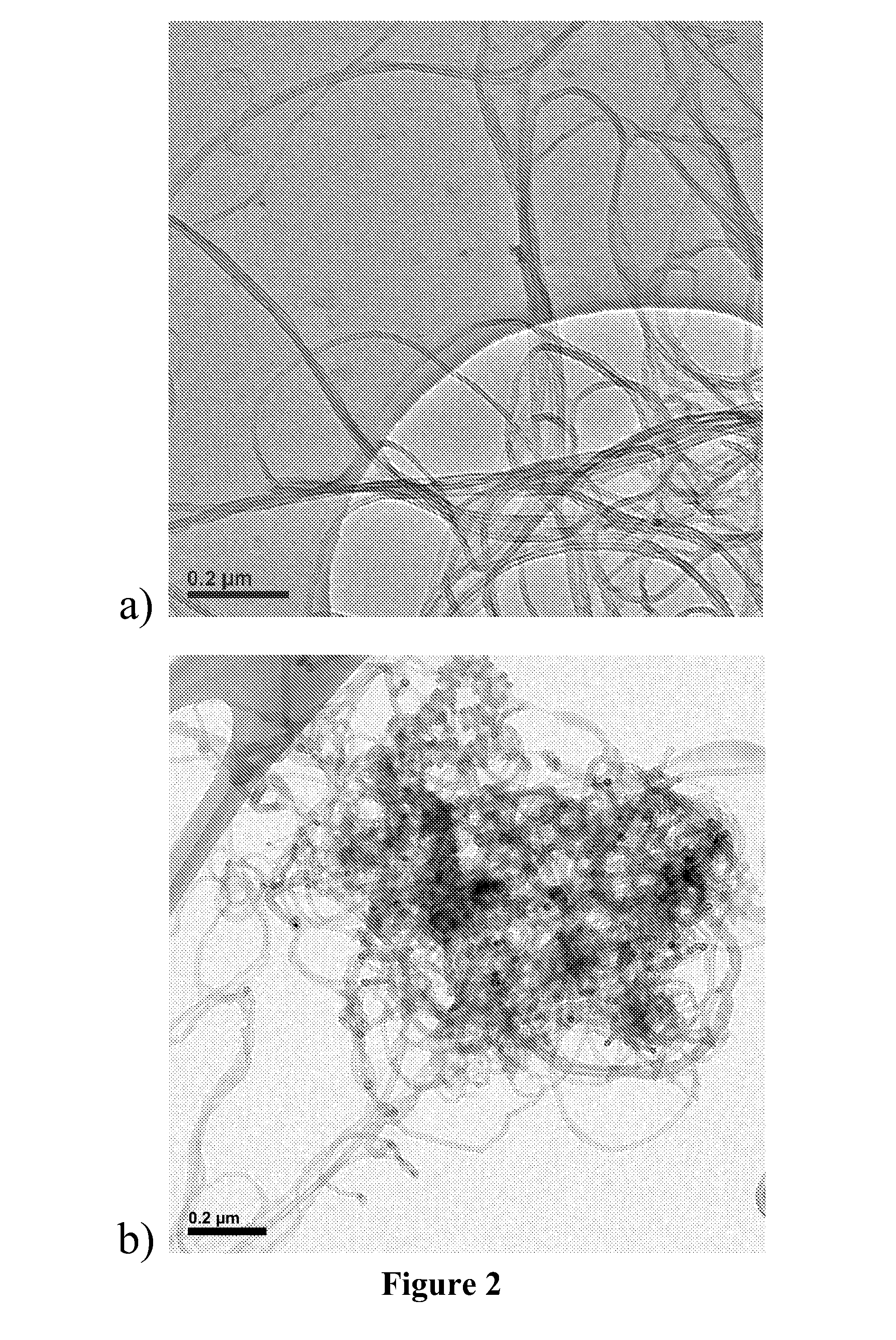Carbon nanotubes nanocomposites for microfabrication applications
a technology of carbon nanotubes and composite materials, applied in the direction of additive manufacturing apparatus, railway signalling, photographic processes, etc., can solve the problems of affecting the mechanical and electronic properties of carbon nanotubes, the difficulty of homogeneous dispersal of carbon nanotubes in the majority of mediums, and the serious problem of cnts-based composite applications
- Summary
- Abstract
- Description
- Claims
- Application Information
AI Technical Summary
Benefits of technology
Problems solved by technology
Method used
Image
Examples
example 1
[0093]0.5 gr of —COOH functionalized CNTs powder was added in 10 gr of methylethyl ketone (MEK) and sonicated in the sonication bath over 6 h. Epon™ Resin SU-8 in solid foam was mechanically ground until a fine powder was obtained. Powder was sieved through colanders with 500, 300, and finally with 150 mm mesh. Obtained SU-8 powder was in small quantities added regularly under vigorous stirring until we add all 10 gr of SU-8 powder. Quantity of tube was fixed to 5 wt % in respect to SU-8.
example 2
[0094]In 19.23 gr of SU-8 formulation containing 65 wt % of solid SU-8 in GBL, which corresponds to 12.5 gr of pure SU-8, we add surfactant BYK-038 in weight which corresponds to values of 17.5 wt % of surfactant in the weight of CNTs. Upon performed 12 h vigorous stirring to obtain good dispersion of surfactant in the SU-8 solution we add 0.1 gr of nonfunctionalized CNTs what corresponds to 0.8 wt % of CNTs in the weight of SU-8.
[0095]Solution was sonicated in the 4 interval of 60 minutes on 10% of power by the sonication finger having power of 100 W.
example 3
[0096]In 31.25 gr of SU-8 formulation containing 40 wt % of solid SU-8 in GBL, which corresponds to 12.5 gr of pure SU-8, we add surfactant Disperbyk-2155 in weight which corresponds to values of 32.8 wt % of surfactant in the weight of CNTs. Upon performed 24 h vigorous stirring to obtain good dispersion of surfactant in the SU-8 solution we add 0.2 gr of CNTs what corresponds to 1.6 wt % of CNTs in the weight of SU-8. Solution was sonicated in the 10 interval of 15 minutes on 20% of power by the sonication finger having power of 200 W.
PUM
| Property | Measurement | Unit |
|---|---|---|
| aspect ratio | aaaaa | aaaaa |
| concentration | aaaaa | aaaaa |
| electrical conductivity | aaaaa | aaaaa |
Abstract
Description
Claims
Application Information
 Login to View More
Login to View More - R&D
- Intellectual Property
- Life Sciences
- Materials
- Tech Scout
- Unparalleled Data Quality
- Higher Quality Content
- 60% Fewer Hallucinations
Browse by: Latest US Patents, China's latest patents, Technical Efficacy Thesaurus, Application Domain, Technology Topic, Popular Technical Reports.
© 2025 PatSnap. All rights reserved.Legal|Privacy policy|Modern Slavery Act Transparency Statement|Sitemap|About US| Contact US: help@patsnap.com



